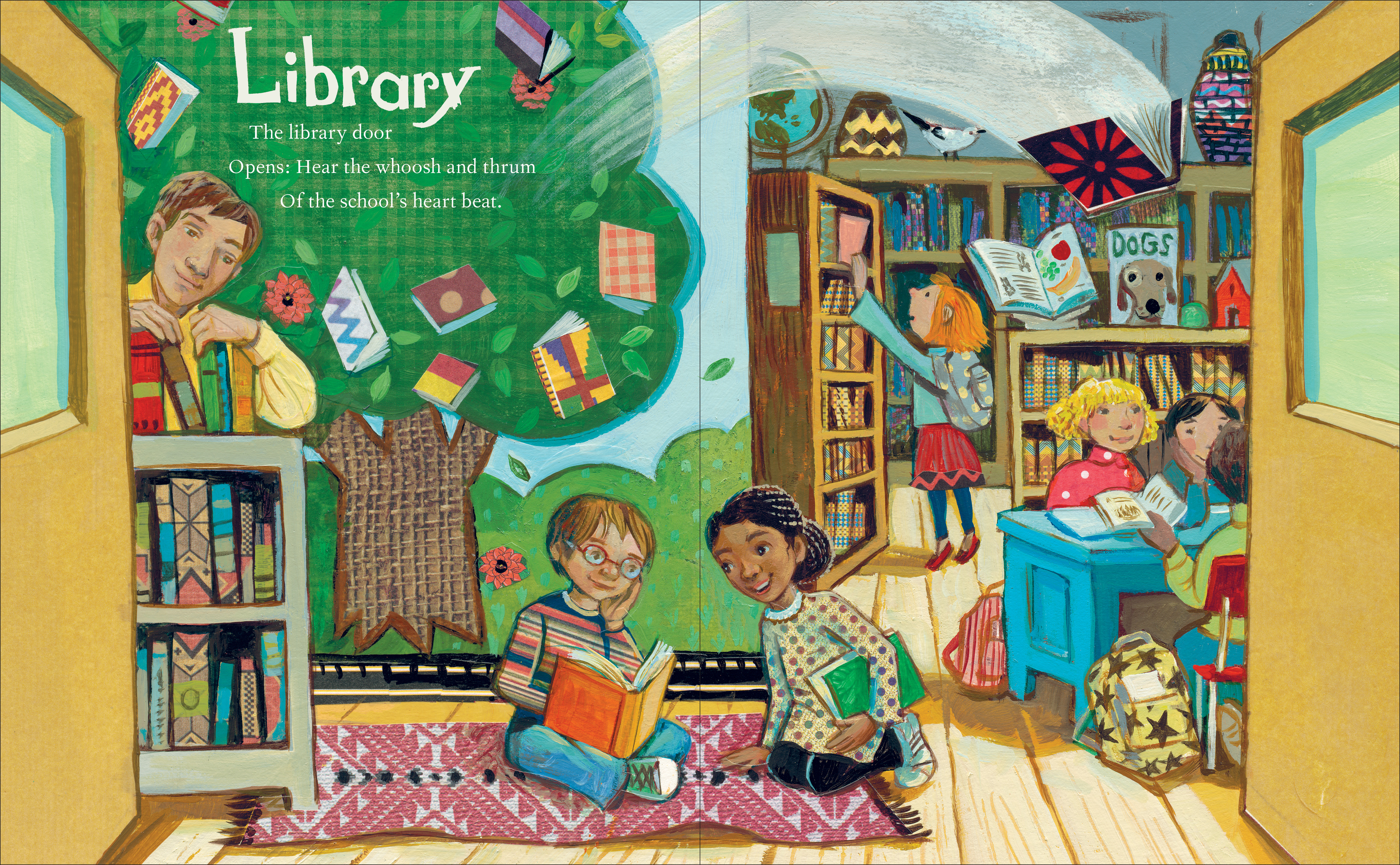–

–
Yeah, this artist, the great Mary GrandPre. Maybe you don’t know her name, but I’m pretty sure you know her work.
So. How does that happen? How does it work in publishing, the writer-illustrator connection? I get asked that a lot.
Though there are exceptions and variations, my book with Mary followed a well-established pattern. Back in 2016, I submitted a manuscript to my editor which was accepted for publication. Just words on a page. In this case, interconnected haiku.
Looking back on a my original submission to Liz Szabla, my editor, dated 4/22/16, I laid out my basic vision:
This collection of haiku celebrates the first day of school and a vision of community. It provides a loose, flowing narrative that carries readers through the multi-faceted moments in a school day as it touches a diverse variety of characters while they move from the bus stop to the morning pledge, to recess and lunch and the final bell.
The poems offer the illustrator opportunities to show a rich variety of children –- wild and brave, silly and earnest, friendly and a little frightened. Through the artwork, illustrations should highlight recurring characters and allow readers to see happy interactions and first steps toward friendship. We are witnesses to the beginning of a new, diverse, and open-hearted community.
There’s flexibility here. The final number of poems depends entirely on layout and editorial’s vision for the book. There are 39 included here (which strikes me as slightly high, compared to other haiku collections of this nature), whereas it could be decided to go with as few as, say, 23 poems –- allowing room for effective double-page spreads for a single haiku.
–
Later in 2016, or possibly early in 2017, I was informed that Mary GrandPre had agreed to illustrate the book. I did not immediately recognize the name. The look of the book would be up to Mary, the art director and designers at Feiwel & Friends, as overseen by Liz. Often, that’s the beginning and end of a writer’s communication with the illustrator. My manuscript did not come with notes to the illustrator, as many do, beyond what I shared above.
To my delight, I did receive a lovely, complimentary email from Mary, asking for my thoughts about possibly cutting some haiku. There was a conflict where the weather described was inconsistent. We went back and forth — Mary was gracious and lovely — and I was very happy to eliminate some, because that was always my intention. I had individual haikus that highlighted the statue of liberty, a student in a wheelchair, and a teacher in a hijab. We realized that since those images would be reflected in the book visually, we were able to cut those haiku in order to make room for others.
For example, I believe everyone hoped there might be at least one spread where there was just one haiku. It turned out to be one that centered on the school library. I wrote:
LIBRARY
The library door
Opens: Hear the whoosh and thrum
Of the school’s heart beat.
Note on the haiku, which followed the traditional 5-7-5 syllable/line count: a haiku does not usually come with a title. But for this book, because it was intended for very young readers, I cheated a little and gave each one a title in the original manuscript. Somewhere along the line I fretted about that, it was a little impure, and asked Liz if maybe we should eliminate the titles. Liz replied that she liked them, believed they worked, and that they also added a visual element to the pages. I said, as I recall, “Okay!”
At a certain point in the process, it’s the only answer available.
–

–
All Welcome Here will be published on June 16, 2020. I’m so eager to hold it in my hands — I’ll probably receive a printed copy in early May, best guess — but I’m more excited to visit schools and, perhaps, even develop some haiku workshops for students of all ages.
So, yeah, Mary GrandPre. How cool is that? How lucky am I?
Can’t wait.




 A recent edition of the Oxford Junior Dictionary swapped nature words for modern terms. Out went acorn, wren, dandelion, nectar, and otter. In went blog, bullet-point, attachment, chatroom, and voicemail. Updating dictionaries isn’t new. And maybe cygnet isn’t as relevant as database, but it’s certainly more musical. If we treat language like paper towels, it’s no wonder many kids can’t name common backyard birds.
A recent edition of the Oxford Junior Dictionary swapped nature words for modern terms. Out went acorn, wren, dandelion, nectar, and otter. In went blog, bullet-point, attachment, chatroom, and voicemail. Updating dictionaries isn’t new. And maybe cygnet isn’t as relevant as database, but it’s certainly more musical. If we treat language like paper towels, it’s no wonder many kids can’t name common backyard birds.





